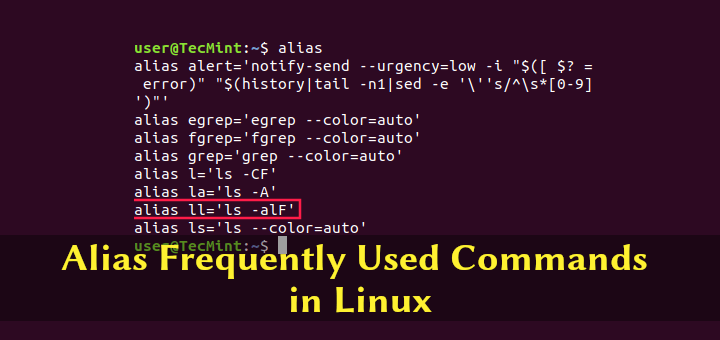Linux is known for its power and flexibility, but the real magic happens when you learn how to harness its full potential. One such hidden gem is aliases. Aliases are essentially shortcuts for commands that you use frequently in the terminal. By creating aliases, you can save time, reduce typing errors, and make your overall workflow much more efficient. In this blog, we’ll explore how to create aliases in Linux, both temporarily and permanently, and how they can help you work smarter in the terminal.

What Are Aliases in Linux?
An alias in Linux is simply a shortcut to a longer command. It’s a way to reduce the amount of typing required for repetitive tasks, making your life as a system administrator, developer, or power user much easier.
For example:
- Instead of typing
ls -levery time to view detailed directory contents, you could create an alias likellthat runsls -lfor you.
Why Use Aliases?
- Efficiency: Quickly access frequently used commands without typing them every time.
- Simplicity: Create short, easy-to-remember commands for complex operations.
- Consistency: Avoid typos or syntax errors when entering long commands.
Creating Aliases in Linux
1. Temporary Aliases
Temporary aliases are valid only for the duration of the current session. Once you close the terminal, the alias will disappear.
To create a temporary alias, use the following syntax:
alias [alias_name]="[command]"For example, to create a temporary alias for ls -l, use:
alias ll="ls -l"Now, typing ll will execute ls -l. This alias will remain active only until you close the terminal.
2. Permanent Aliases
If you want your aliases to persist across terminal sessions, you’ll need to add them to your shell’s configuration file. The most common file for Bash users is ~/.bashrc, and for Zsh users, it's ~/.zshrc.
Here’s how you can create permanent aliases:
- Open the configuration file with a text editor:
nano ~/.bashrc # For Bash users- or
nano ~/.zshrc # For Zsh users- Scroll to the bottom and add your aliases. For example:
alias ll="ls -l"
alias gs="git status"
alias ..="cd .."- Save the file and exit the editor (in Nano, press
Ctrl + X, thenYto confirm, andEnterto save). - To apply the changes, source the file:
source ~/.bashrc # For Bash users- or
source ~/.zshrc # For Zsh usersYour aliases are now permanent and will be available every time you open a new terminal session.
Advanced Tips for Aliases
- Overriding Default Commands: You can use aliases to override default commands. For instance, you can make
rmalways ask for confirmation before deleting files by creating an alias like this:
alias rm="rm -i"- Using Functions in Aliases: If your alias needs more than one command, you can combine them in a function. For example, to combine the
cdcommand with listing the directory contents:
alias cdl="cd $1 && ls -l"- This alias changes into a directory and lists its contents in one command.
Managing Your Aliases
As your list of aliases grows, it might become difficult to keep track of them. To view your current aliases, simply type:
aliasTo remove an alias, use the unalias command:
unalias [alias_name]For example:
unalias llThis will remove the alias for ll.
Conclusion
Aliases are a simple yet powerful way to enhance your productivity in the Linux terminal. By creating shortcuts for your most-used commands, you can save time and avoid unnecessary errors. Whether you need temporary aliases for a quick session or permanent ones for ongoing tasks, Linux makes it easy to customize your terminal to suit your needs.
Start by creating a few aliases today and see how much faster you can work in the terminal. You’ll be amazed at how much more efficient your workflow becomes!

No comments:
Post a Comment